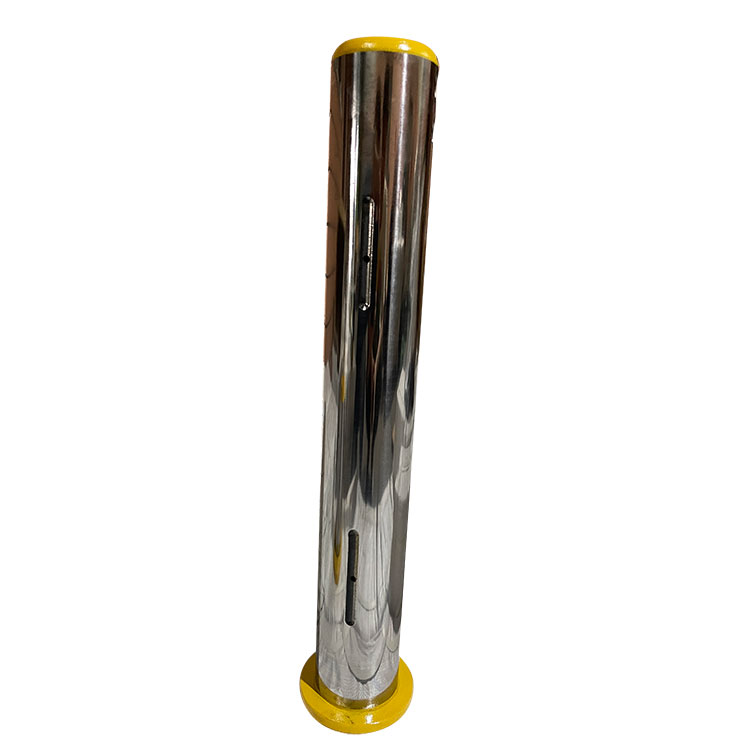Understanding the Differences: Cylinder Pins, Dowel Pins, and Clevis Pins in Mechanical Systems
2024-03-08
Introduction:
In mechanical systems, various types of pins are used to facilitate alignment, support, and actuation. Among these pins, cylinder pins, dowel pins, and clevis pins are commonly employed, each with unique characteristics and applications. In this blog post, we'll explore the differences between cylinder pins, dowel pins, and clevis pins to better understand their roles in mechanical assemblies.
Cylinder Pins:
Cylinder pins, also known as roll pins or spring pins, are cylindrical fasteners with a spring-like design. They feature a slot or spiral cut along their length, allowing them to compress or expand slightly to grip the mating components securely. Cylinder pins are typically used for aligning and securing rotating parts, such as gears, pulleys, and shafts. They provide a reliable, vibration-resistant connection while allowing for some degree of flexibility.
Dowel Pins:
Dowel pins are solid cylindrical pins with precise dimensions and tight tolerances. They are used to align two or more components accurately within a mechanical assembly, ensuring proper positioning and orientation. Dowel pins feature chamfered ends to facilitate insertion and are often press-fit into pre-drilled holes to achieve a tight interference fit. Dowel pins are commonly used in applications where precise alignment and stability are critical, such as in machine tools, automotive engines, and furniture assembly.
Clevis Pins:
Clevis pins, also known as quick-release pins or hitch pins, are straight pins with a head at one end and a cross-drilled hole at the other end. They are used to fasten and secure components together, typically in conjunction with clevis brackets, yokes, or other linkage systems. Clevis pins are inserted through the aligned holes in the mating components and secured in place using a cotter pin, R-clip, or spring clip. They provide a convenient, quick-release connection that allows for easy assembly and disassembly in applications such as agricultural machinery, hydraulic systems, and vehicle linkages.
Key Differences:
While cylinder pins, dowel pins, and clevis pins serve similar functions in mechanical systems, they differ in their design, construction, and applications:
1. Design: Cylinder pins feature a spring-like design with a slot or spiral cut, allowing for slight compression or expansion. Dowel pins are solid cylindrical pins with precise dimensions and chamfered ends. Clevis pins have a head at one end and a cross-drilled hole at the other end for securing with a retaining mechanism.
2. Functionality: Cylinder pins are primarily used for aligning and securing rotating parts, providing a flexible, vibration-resistant connection. Dowel pins are used for precise alignment and positioning of components within an assembly, ensuring stability and accuracy. Clevis pins are used for fastening and securing components together, offering a quick-release connection for ease of assembly and disassembly.
3. Attachment Method: Cylinder pins are typically press-fit into pre-drilled holes or inserted through aligned bores and secured with friction or tension. Dowel pins are press-fit into pre-drilled holes to achieve a tight interference fit. Clevis pins are inserted through aligned holes in the mating components and secured with a separate retaining mechanism such as a cotter pin or spring clip.
Conclusion:
Cylinder pins, dowel pins, and clevis pins are integral components in mechanical systems, each serving specific functions and applications. By understanding the differences between these types of pins, engineers and designers can select the most suitable fastening solution to meet the requirements of their assemblies, ensuring precision, stability, and reliability in operation. Whether used for alignment, support, or fastening, cylinder pins, dowel pins, and clevis pins play essential roles in the functionality and performance of diverse mechanical systems.



